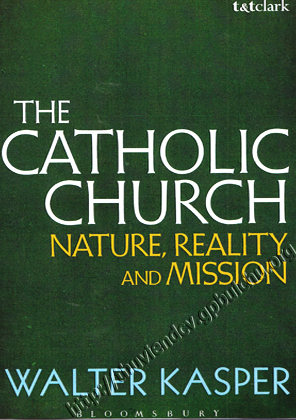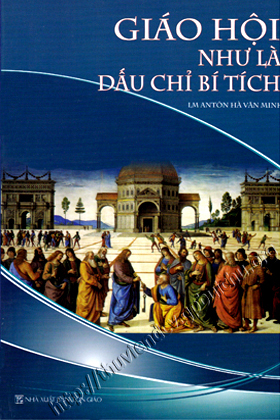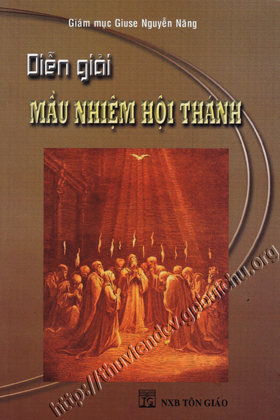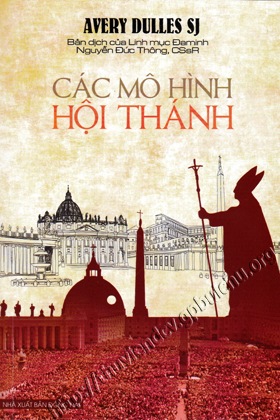| Translator’s note |
XV |
| Preface |
XVII |
| I. My journey in and with the Church |
1 |
| 1. The Church-‘black, but beautiful’ |
1 |
| 2. My coming-of-age during the pre-conciliar renewals |
4 |
| 3. Theological formation as a student |
5 |
| The Tubingen School |
5 |
| Schelling and Thomas Aquinas |
7 |
| Karl Rahner - Henri de Lubac - Yves Congar - Hans Kiing |
9 |
| A living tradition |
9 |
| 4. The lasting significance of the Second Vatican Council |
10 |
| Awakening and renewal |
10 |
| Principles of conciliar hermeneutics |
12 |
| Post-conciliar reception history (Wirkungsgeschichte) |
14 |
| 5. Post-conciliar controversies |
16 |
| My time in Munster |
16 |
| Pastoral issues |
16 |
| The 1968 revolution and the theology of liberation |
18 |
| Controversies concerning Professor Hans Kiing |
19 |
| ‘Consolidation’ |
19 |
| 6. Breakthrough to my own ecclesiological approach |
20 |
| The Extraordinary Synod of Bishops, 1985 |
20 |
| Communio as guiding principle |
21 |
| A new communial and relational way of thinking |
22 |
| 7. Pastoral and ecumenical expansions of the horizon |
23 |
| Pastoral experiences as a bishop |
23 |
| Extending the perspective internationally |
24 |
| Expanding the horizon ecumenically |
25 |
| Dialogue with the Oriental churches |
27 |
| Dialogue with the churches of the Reformation |
28 |
| Dialogue with the free churches |
29 |
| Religious dialogue with the Jews |
31 |
| 8. Present crises and challenges |
32 |
| The present internal crisis |
32 |
| The end of the Constantinian epoch |
33 |
| A secular age? |
34 |
| The Church as qualitative and creative minority |
36 |
| What this book seeks to do |
37 |
| II. Outlines of Catholic ecclesiology |
38 |
| 1. Preliminary considerations from the perspective of |
|
| fundamental theology |
38 |
| 1.1. Introduction |
38 |
| ‘Church’ - an ambiguous word |
38 |
| Understanding the Church from inside out |
39 |
| The basic problem of ecclesiology |
40 |
| 1.2. Preliminary methodological considerations |
42 |
| Ecclesiological method - ecclesiology as the science of faith |
42 |
| Ecclesiology as the self-reflection of the Church |
43 |
| Ecclesiology as ecclesial science |
45 |
| The dogmatic character of ecclesiology |
47 |
| Scripture and Tradition within the self-reflection of the Church |
50 |
| Dogmatics as an open system |
51 |
| ‘Faith seeking understanding’ - speculative theology |
53 |
| Theology as an invitation to faith, not as proof of faith |
54 |
| 1.3. Philosophical preconsiderations |
55 |
| Communio and communication |
55 |
| Hope for perfect communication |
57 |
| Pre-understanding as an invitation to decision |
59 |
| 2. The horizons of universal and salvation history |
61 |
| 2.1. The mystery of communion |
61 |
| A brief glance at the history of ecclesiology |
61 |
| The systematic location of ecclesiology |
66 |
| Preliminary considerations for a theological understanding of mystery |
68 |
| The biblical meaning of mystery |
73 |
| The Church in light of the mystery of the Trinity |
75 |
| The Church as the universal sacrament of salvation |
78 |
| The Church as a work of art - the beauty of the Church |
81 |
| 2.2. The kingdom of God and the Church |
83 |
| God’s saving design - the gathering together and establishment of |
|
| peace among the nations |
83 |
| Jesus’ message of the kingdom of God |
84 |
| Did Jesus want a church? |
86 |
| The Jesuanic and Christological foundations of the Church |
87 |
| What is the meaning of ‘ecclesia’ - ‘Church’? |
90 |
| The Church - institution and/or event? |
92 |
| The earthly church and the heavenly Church |
95 |
| The Church as eschatological sign |
97 |
| 2.3. The Church as the house of wisdom and temple of God |
101 |
| The Church as the house of wisdom |
101 |
| The public mandate of the Church |
103 |
| The Church as temple and house of God |
105 |
| Current significance |
107 |
| 2.4. The Church as congregatio fidelium and communio sanctorum |
108 |
| The Church as congregatio fidelium |
108 |
| The Church as communio sacramentorum |
110 |
| The ‘belonging together’ and eschatological dimension of word |
|
| and sacrament |
112 |
| 2.5. No salvation outside the Church? |
114 |
| Massa damnata or universal salvation? |
114 |
| Biblical foundations and developments in the history of |
|
| theology |
115 |
| The teaching of Vatican II |
116 |
| Why then still mission? |
118 |
| 3. Defining the nature of the Church |
119 |
| 3.1. The Church as ‘people of God’ - the theocentric and doxological |
119 |
| architecture of the Church |
|
| The meaning of the term ‘people of God’ |
119 |
| The significance of the ‘people of God’ in the history of salvation |
120 |
| The Second Vatican Council |
122 |
| Universal significance |
123 |
| Theocentric and doxological aspects of the ‘people of God’ |
125 |
| 3.2. The Church as body and bride of Christ - the Christocentrism |
|
| of the Church |
126 |
| Biblical foundations |
126 |
| An eventful historical development |
128 |
| The Second Vatican Council |
130 |
| The Church as bride and prostitute |
131 |
| 3.3. The Church as the temple of the Holy Spirit - |
|
| the Pneumatological dimension |
135 |
| The pneumatological dimension of the Church |
135 |
| Does the West forget the Spirit? |
136 |
| The charismatic dimension of the Church |
138 |
| Charisma and institution - the Church as sacrament of the Spirit |
140 |
| The universal efficacy of the Spirit |
142 |
| Discerning the spirits |
143 |
| 3.4. Mary — archetype of the Church |
145 |
| The human-earthly person of Mary |
146 |
| Mother of God and mother of the Church |
146 |
| Sola gratia — sola fide |
147 |
| Mary as type of the Church, new Eve and seat of Wisdom |
149 |
| 4. The marks of the Church of Jesus Christ |
151 |
| 4.1. The one Church of Jesus Christ and the many churches |
152 |
| Unity as unicity of the Church |
152 |
| Inner unity and diversity of the Church |
154 |
| Unity of the Church - unity of humanity |
155 |
| The scandal of divisions |
156 |
| Catholic and Reformation understandings of the unity of the |
158 |
| Church |
|
| ‘Subsistit in’ |
159 |
| 4.2. The holiness of the Church and sin in the Church |
162 |
| Holiness as the mysterium tremendum of God |
162 |
| The Church as the holy people of God |
163 |
| Structural holiness |
165 |
| All are called to holiness |
166 |









